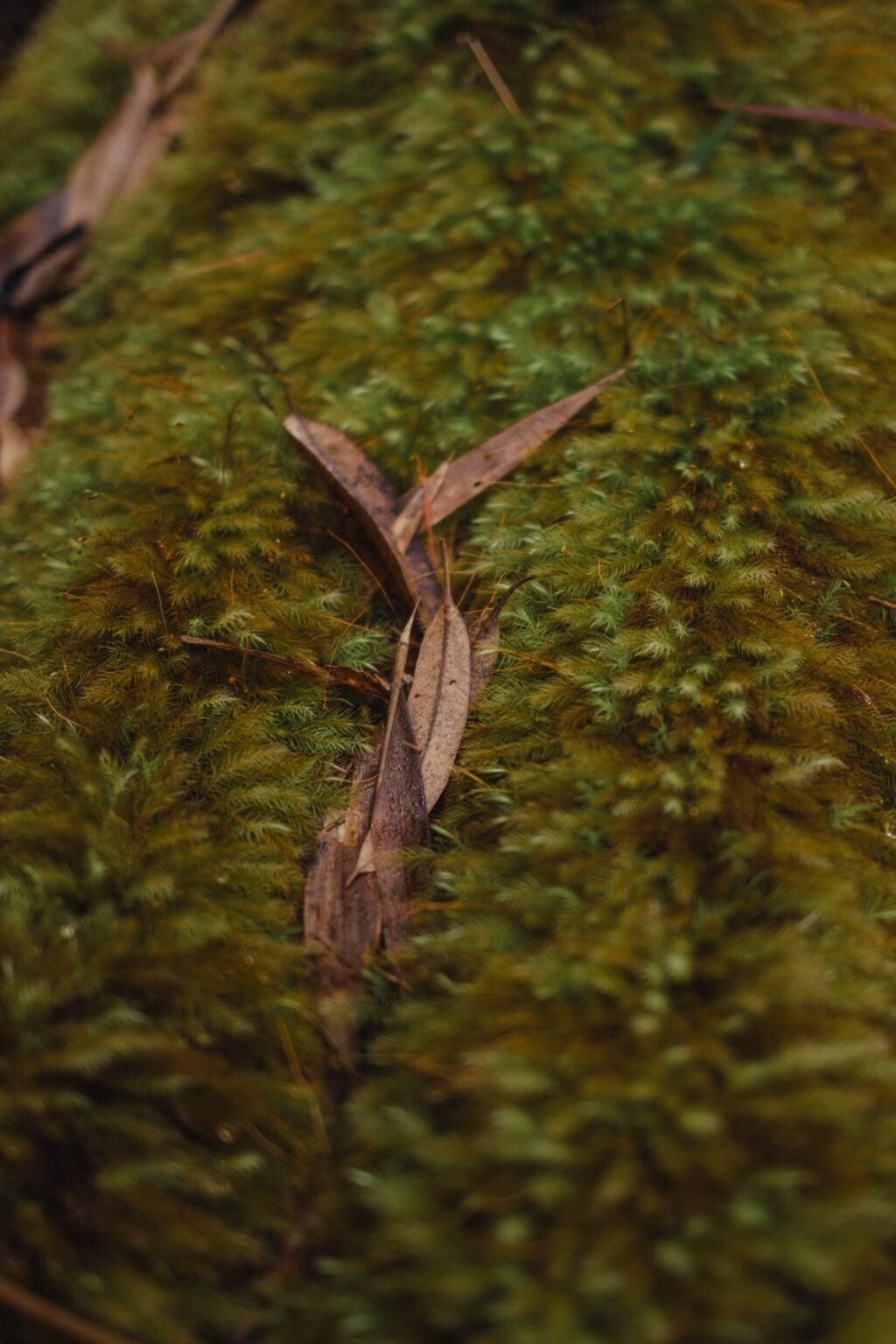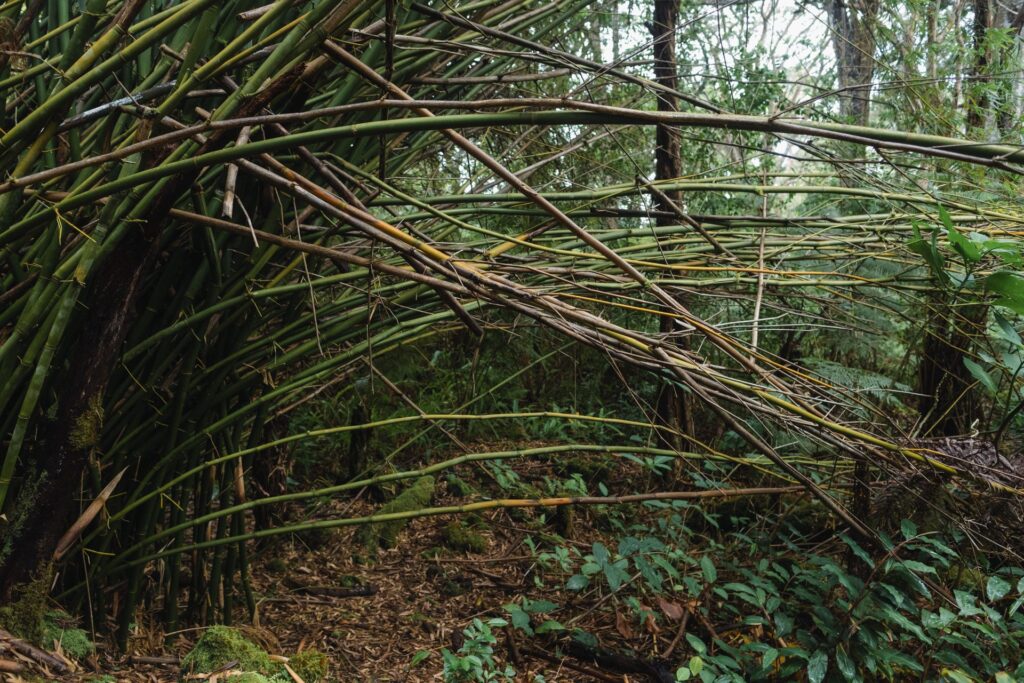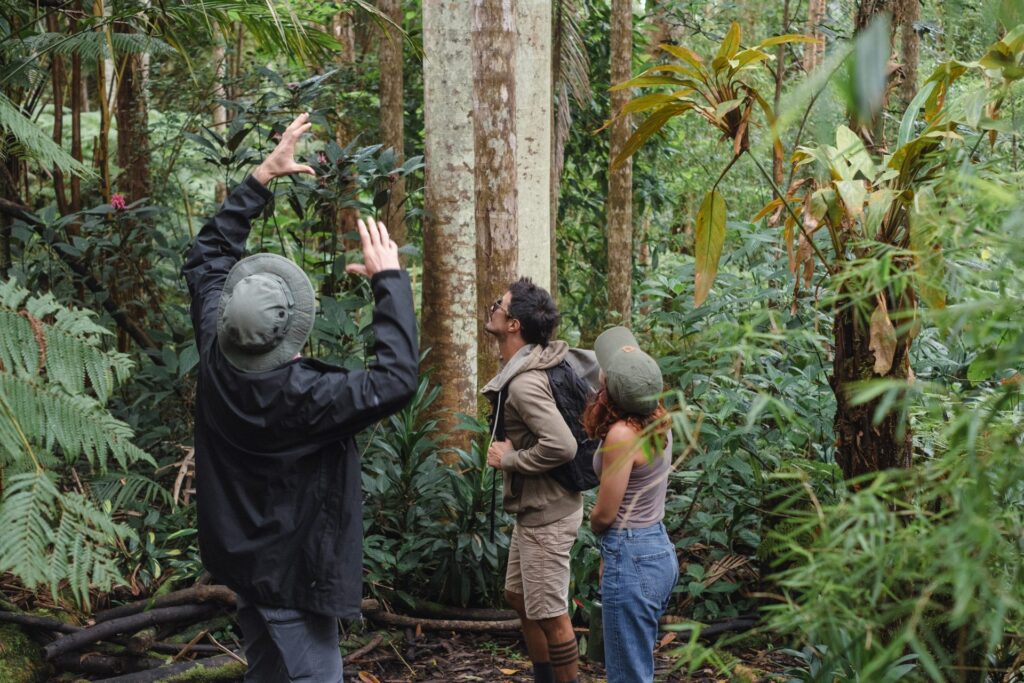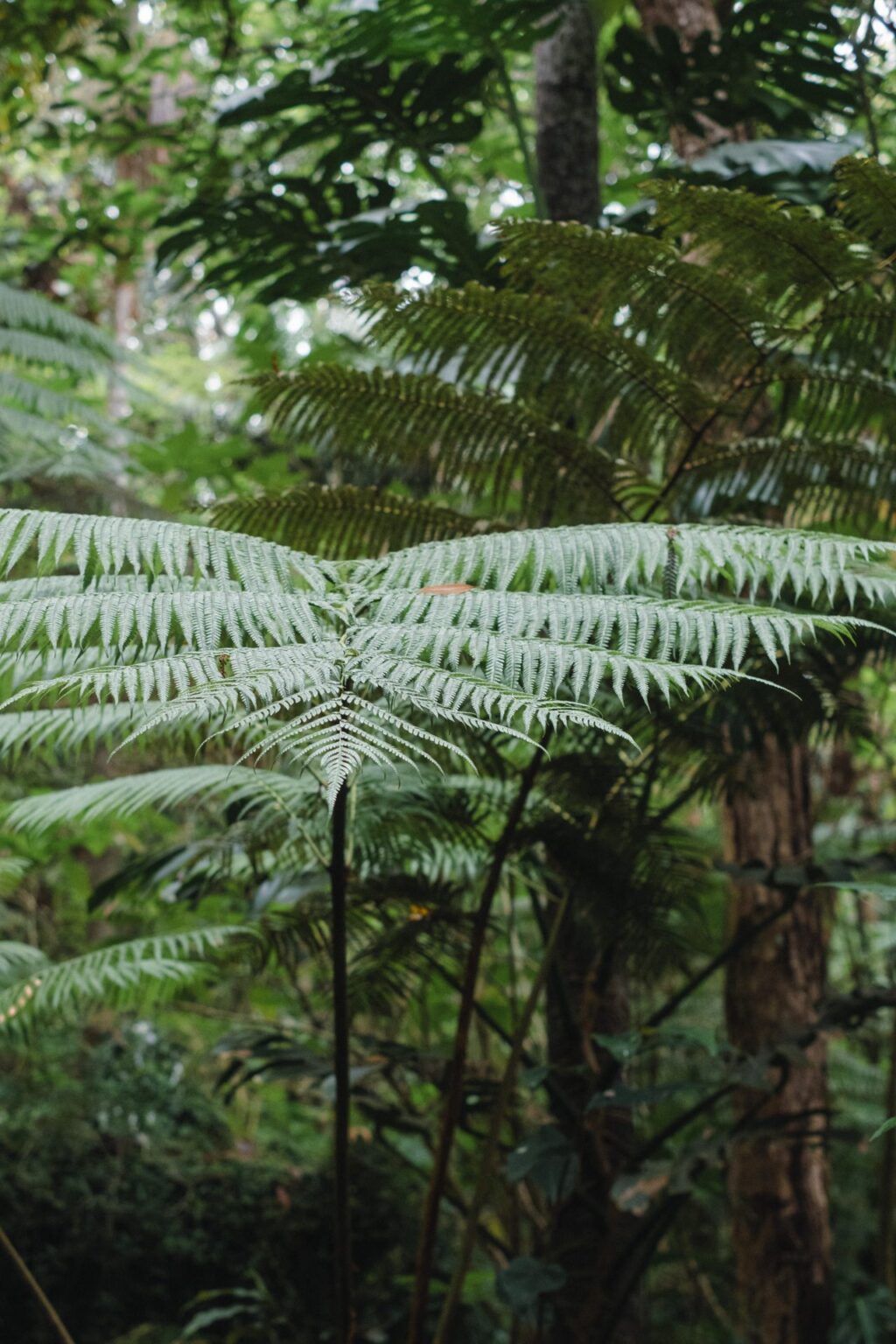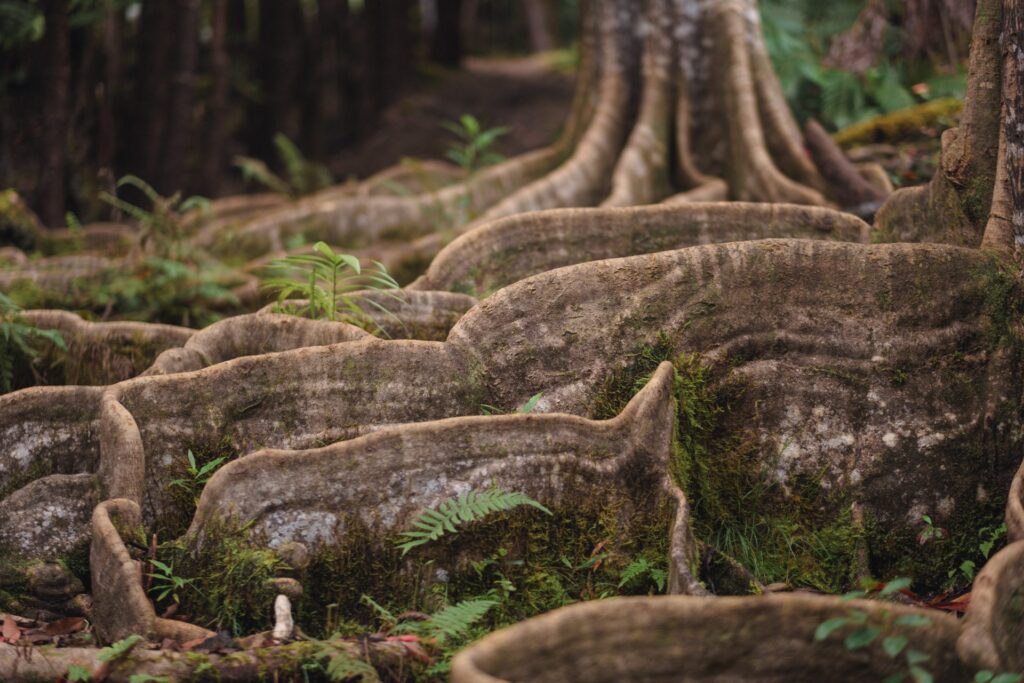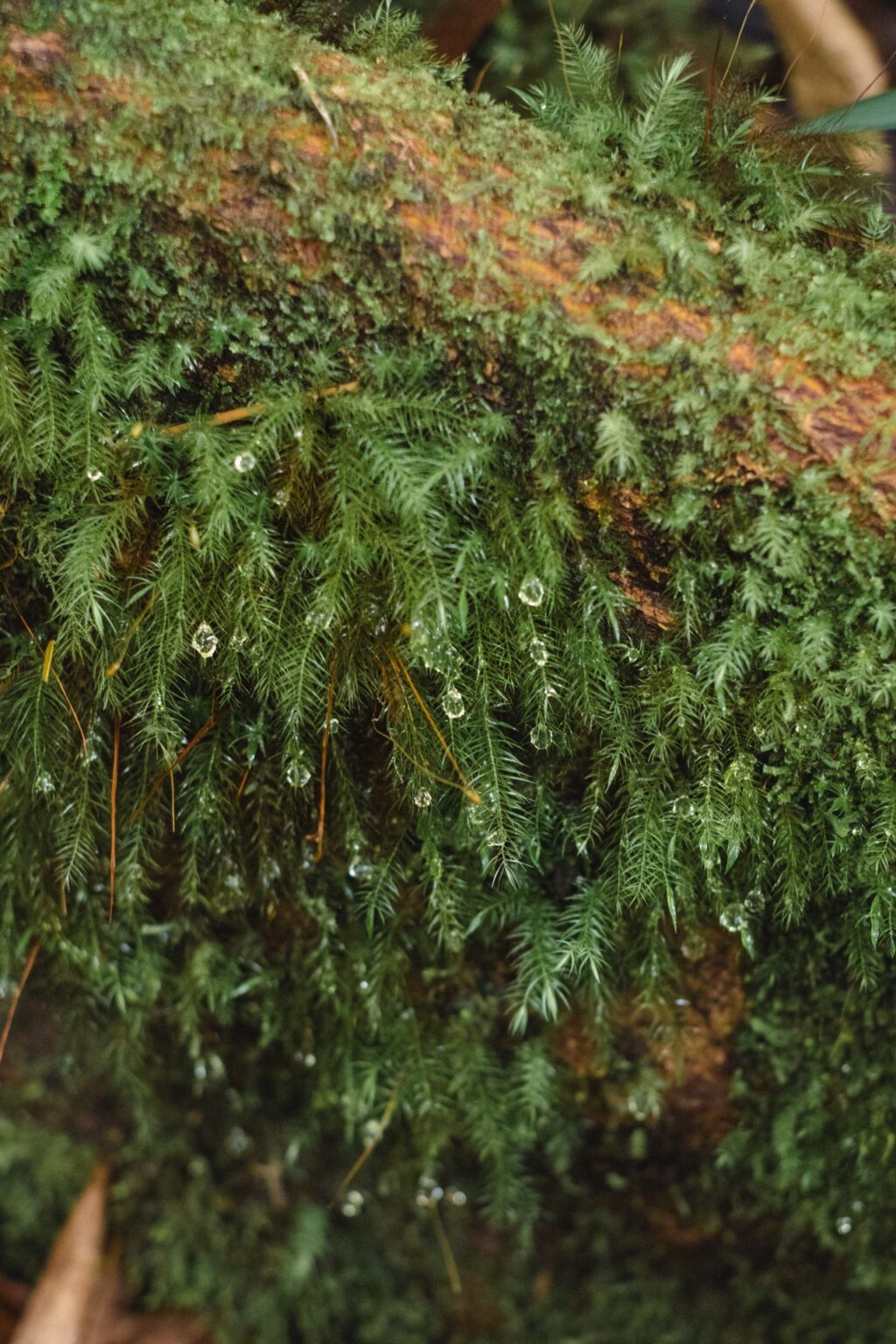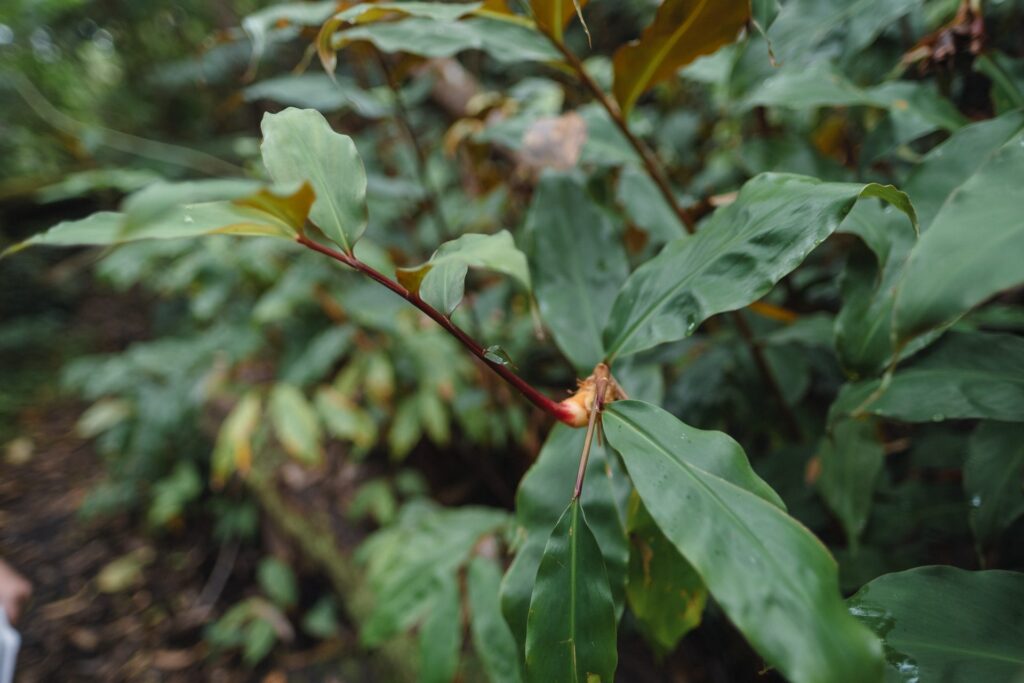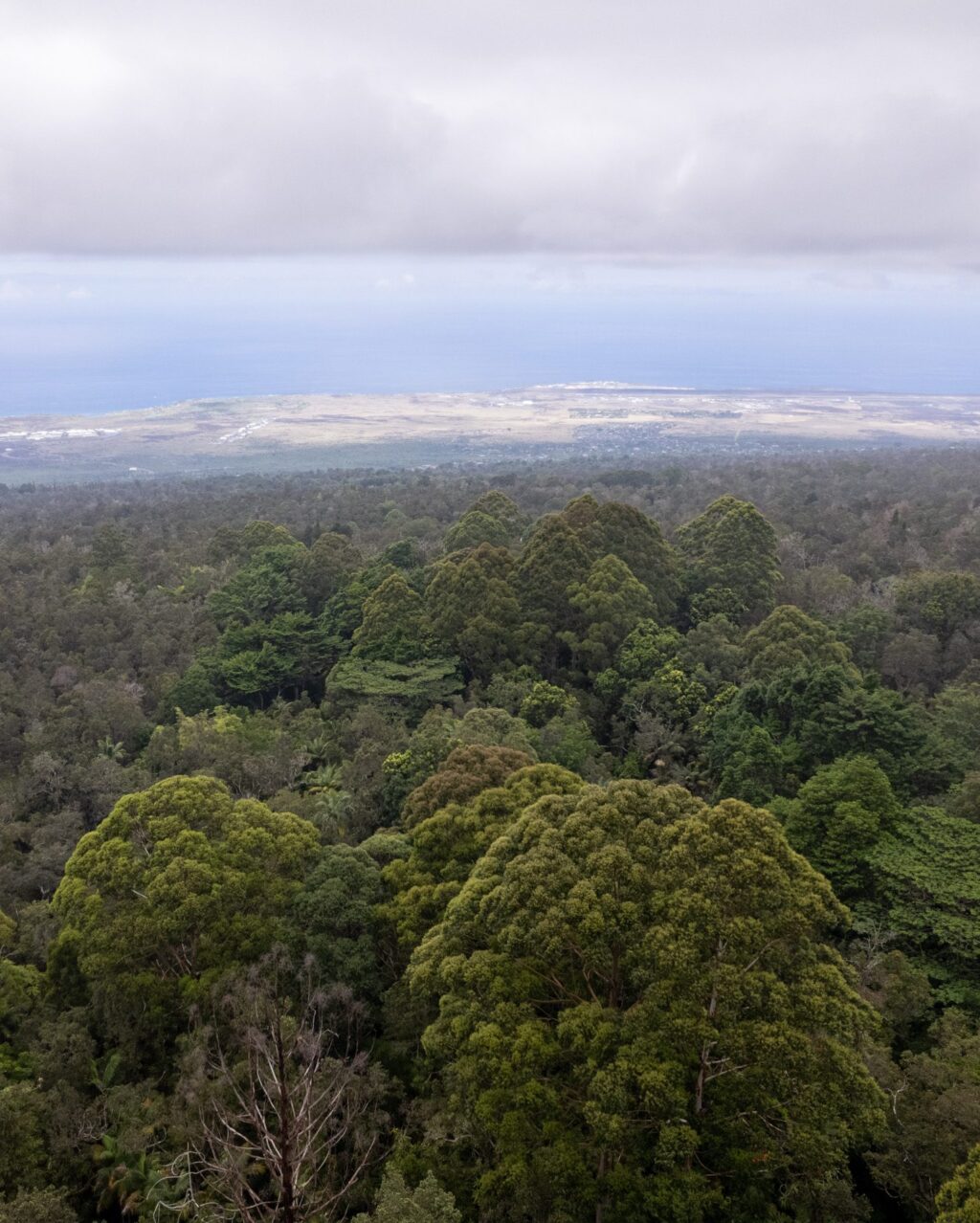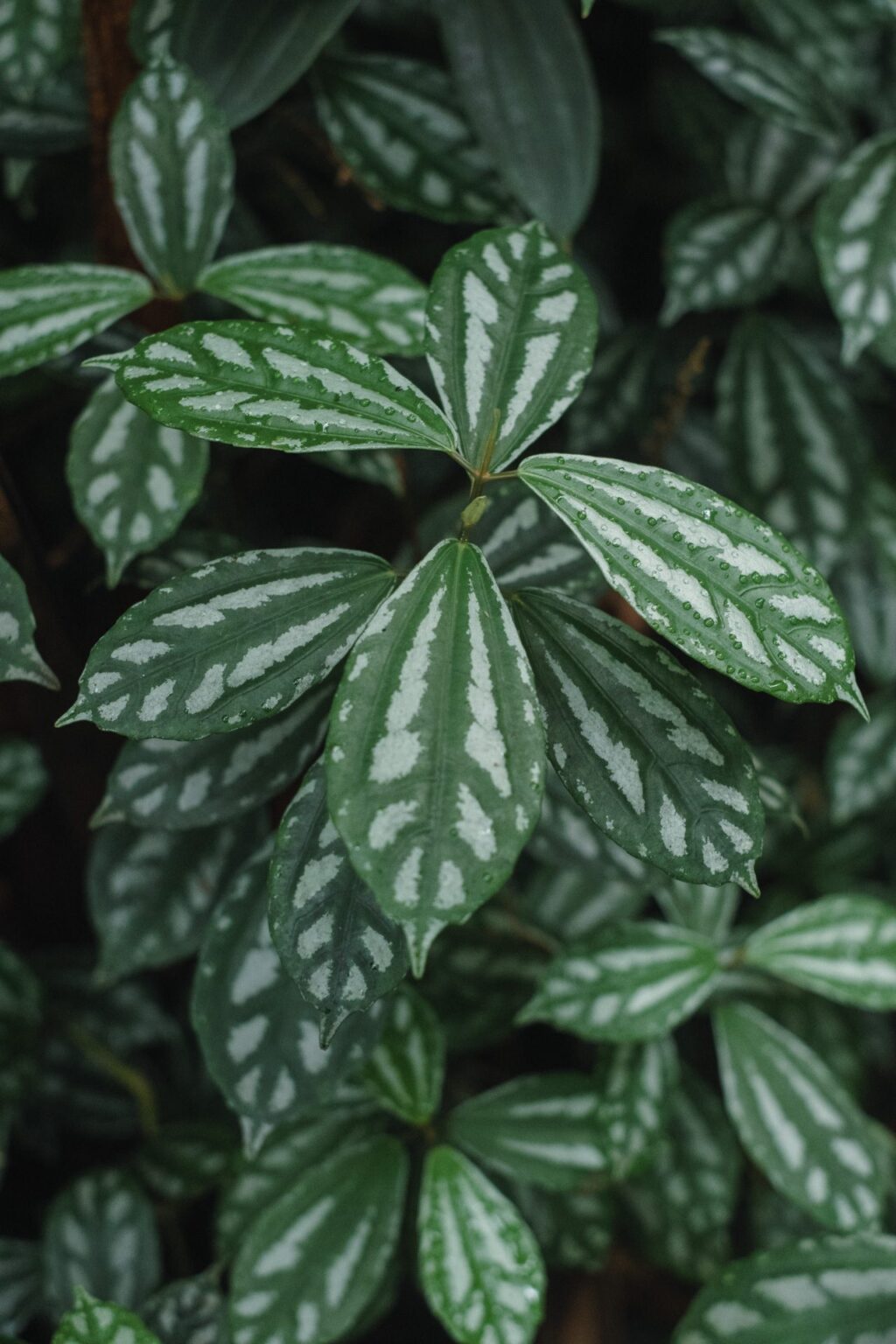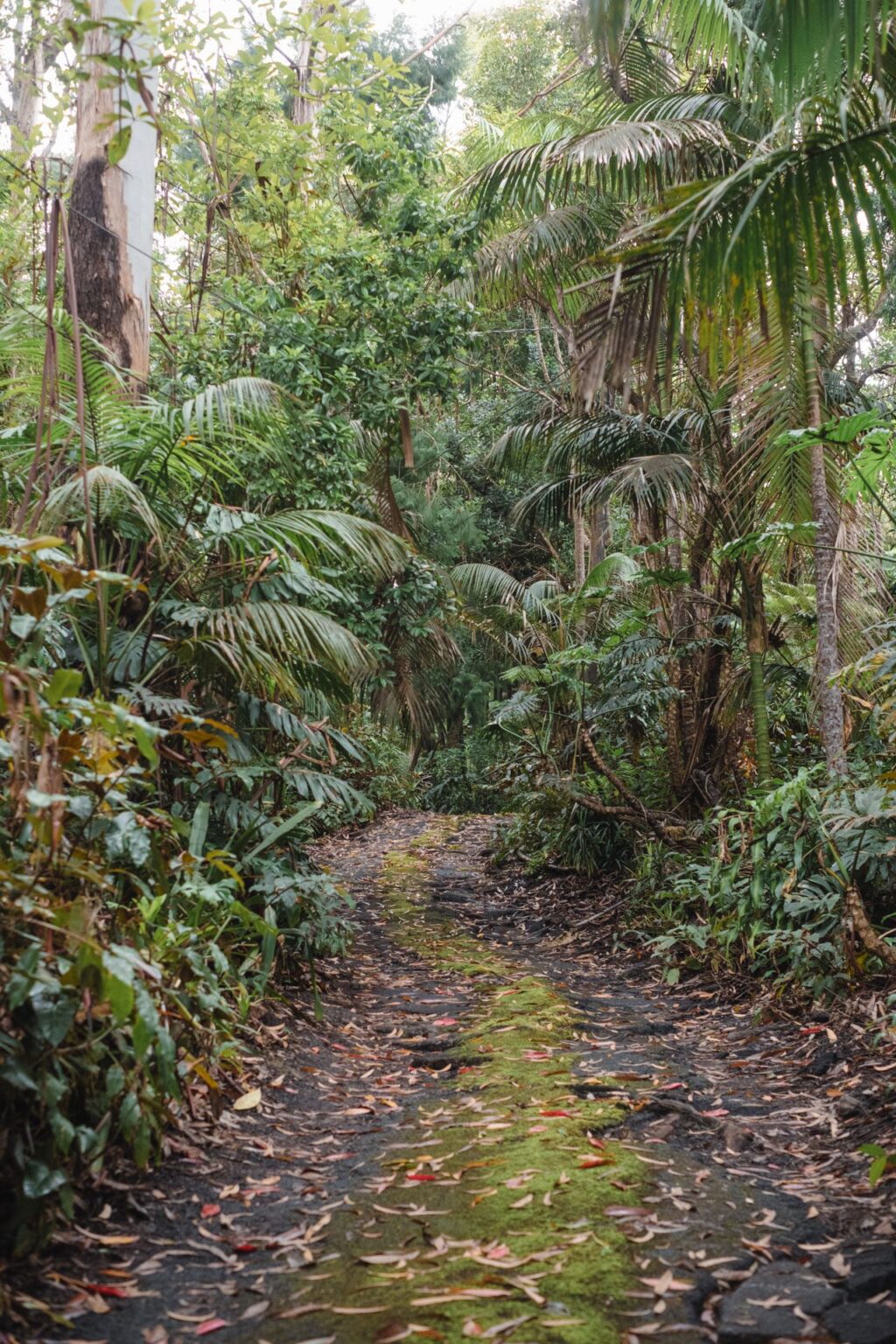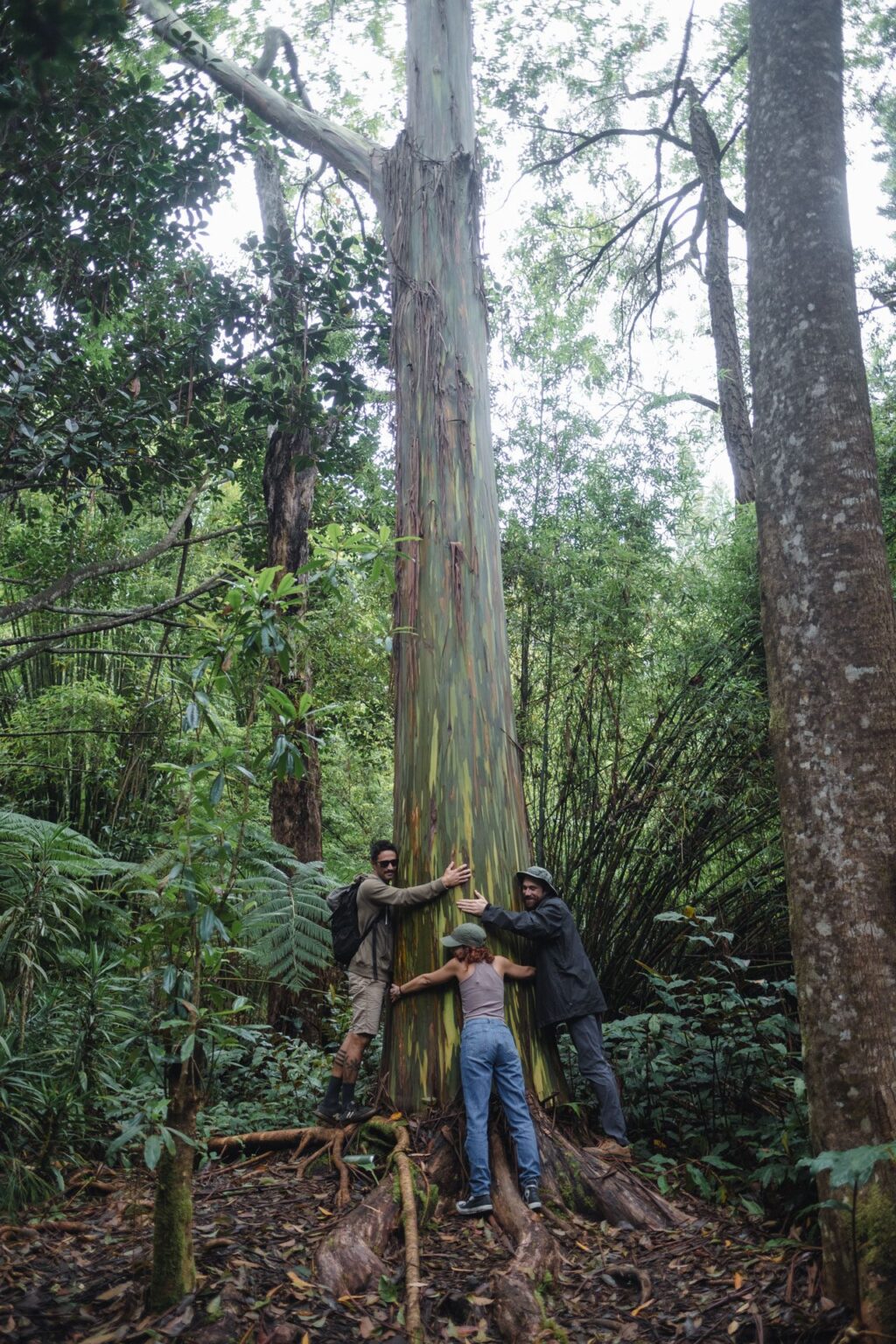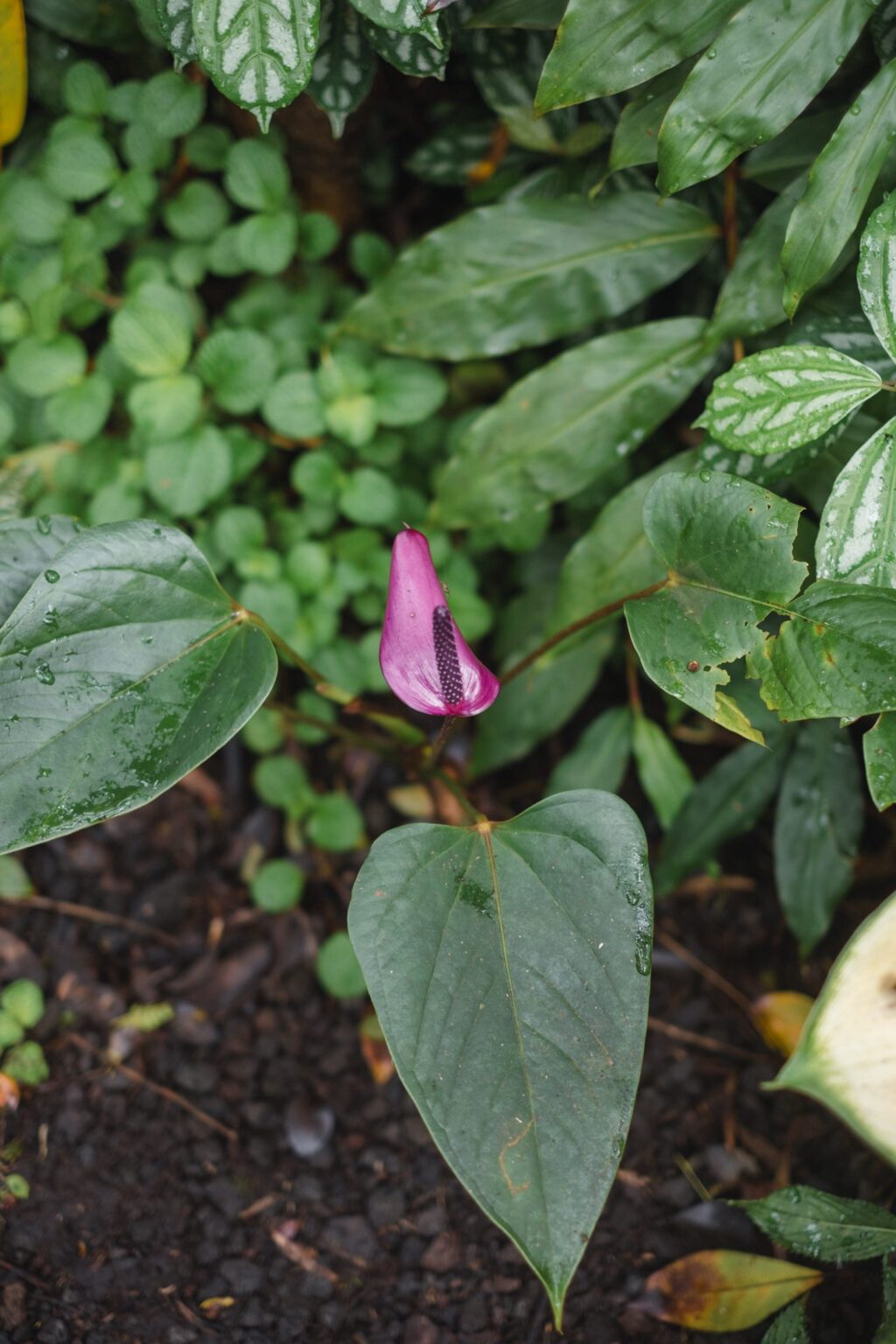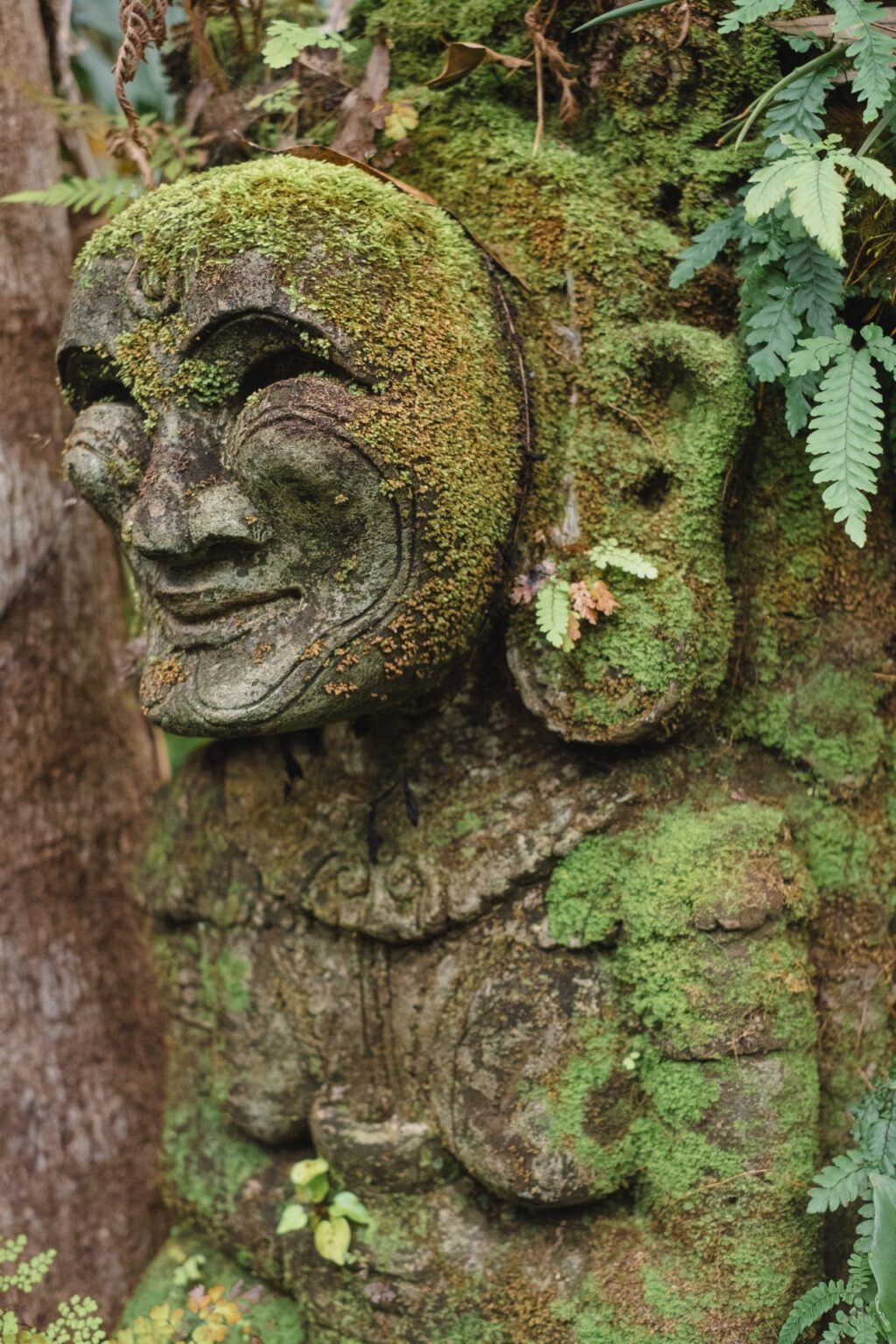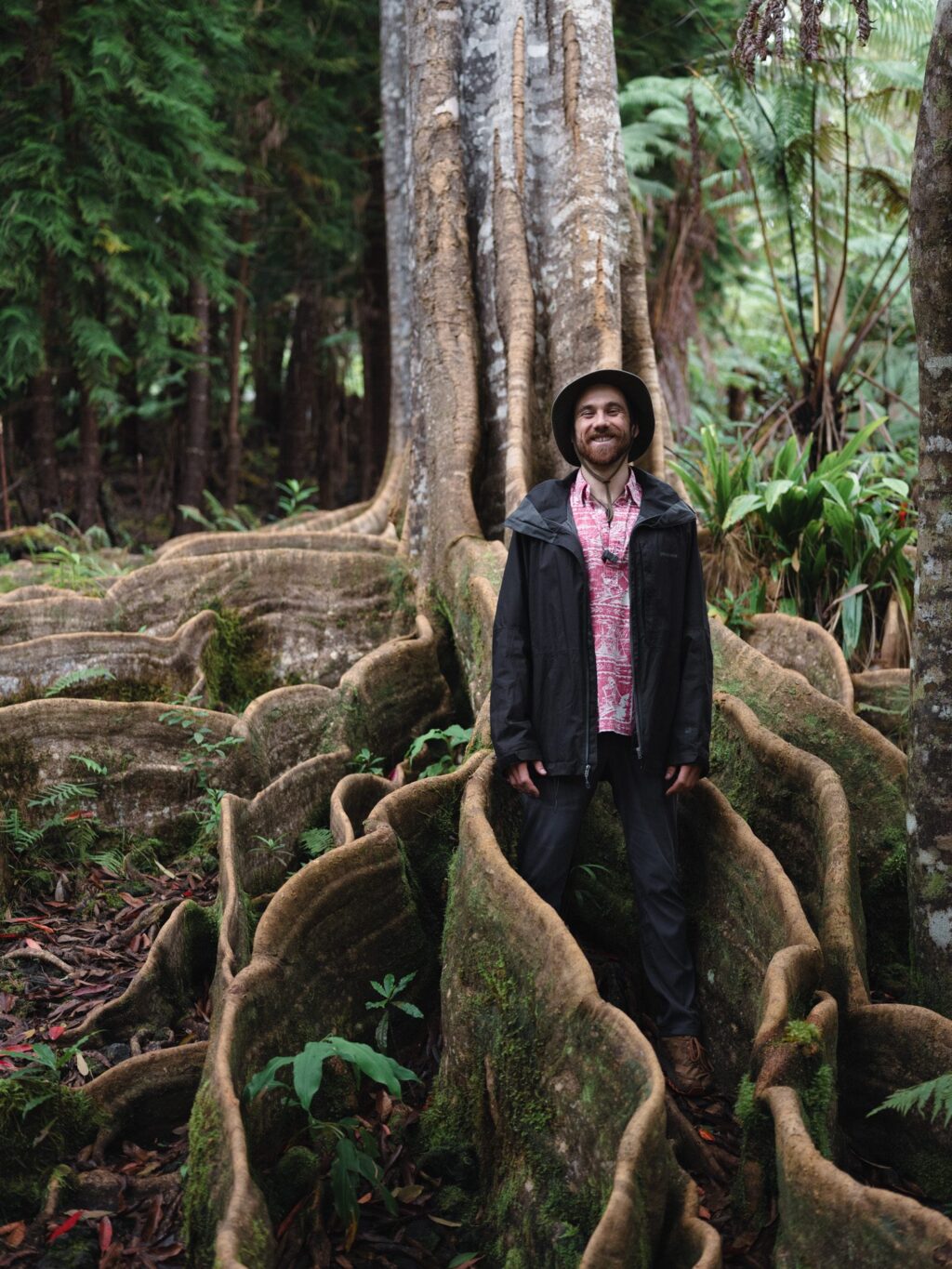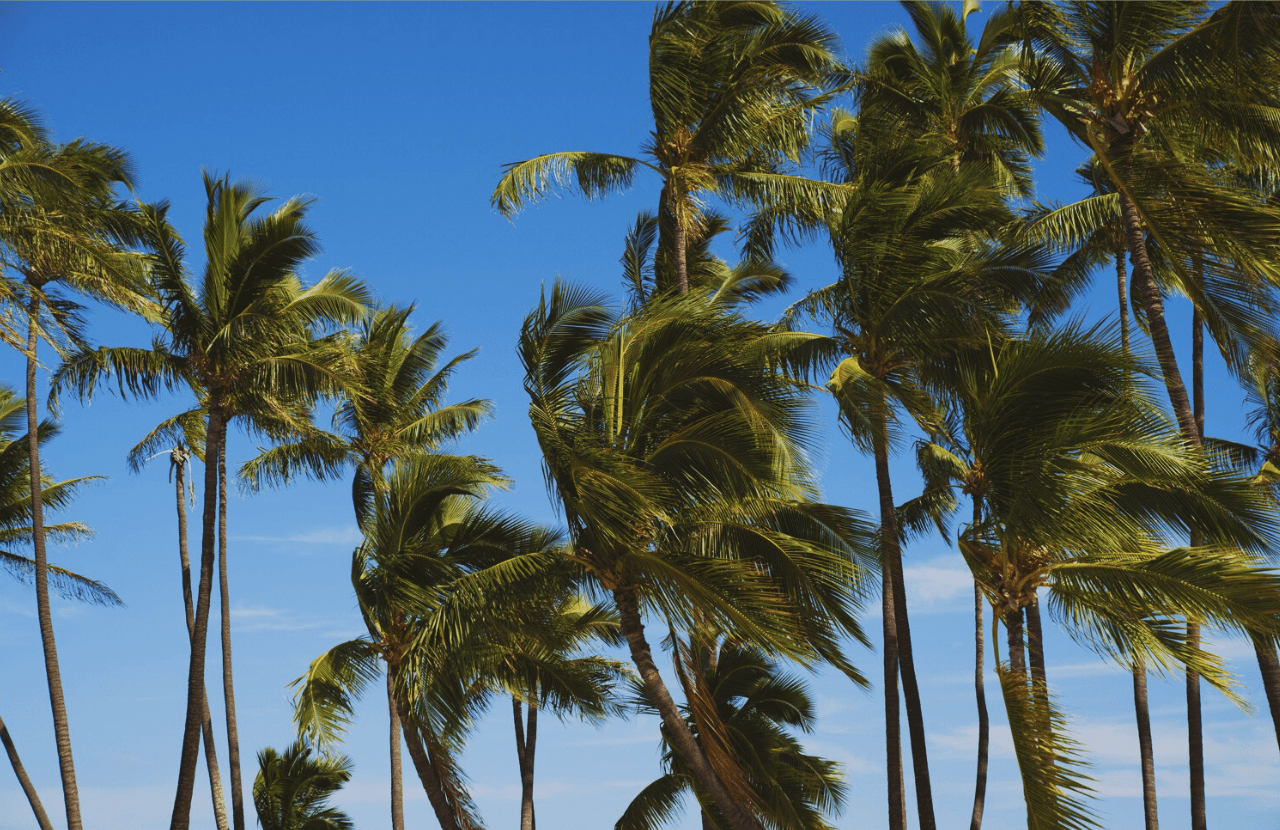LOCATION _ THE BIG ISLAND
KONA CLOUD FOREST SANCTUARY
Duration 2.5 hrs
Rated EasyAge 5+
$149 Adults | $139 Seniors 65+ & Military
$79 Students 12-18 & Hawaiʻi residents with ID
$49 Children 5-11
CONNECTING TO THE TREES
Our mission is to inspire connection, awareness, preservation, and restoration of forest ecosystems! Stepping into the Kona Cloud Forest Sanctuary is a transformational experience. It’s not just the varieties of trees, intentionally planted to reclaim this unique climate zone, it’s a quality in the air. It’s an invitation into presence. You’ve heard of forest bathing, that Japanese term pinpointing the healing properties of spending time in a forest, well, spend some time in the Kona Cloud Forest Sanctuary to learn about this unique climate zone, connect with nature, and leave a renewed version of yourself. No prune fingers are required.
HIGHLIGHTS
- The Kona Cloud Forest Sanctuary is our ohana’s passion project! This Sanctuary has been family-forested and stewarded since 1982!
- Connect with the forest and understand the benefits of living forest-friendly!
- Immerse yourselves in this vibrant and unique Hawaiian tropical montane cloud forest!
- Explore the extended montane jungle trail with additional plant diversity and beauty!
- Discover trees, ferns, bamboo, flowers, and wildlife that you have never seen before!
- Our trails are all natural terrain of lava rock and roots. Walking distance covered is 1-2 miles, with approximately 100 feet of elevation change
This tour is for you if:
- You love plants and forests and are ready to become an expert naturalist!
- You are eager to explore and learn about the only cloud forest in the United States!
- You want the full immersive Kona Cloud Forest Sanctuary experience, including the Pan-Tropical Forest and the Montane-Tropical Forest trails.
- You are ready to ascend to the higher elevation parts of the Sanctuary that no other tour visits!
- You love birds and want to see and hear the native Hawaiian honeycreepers!
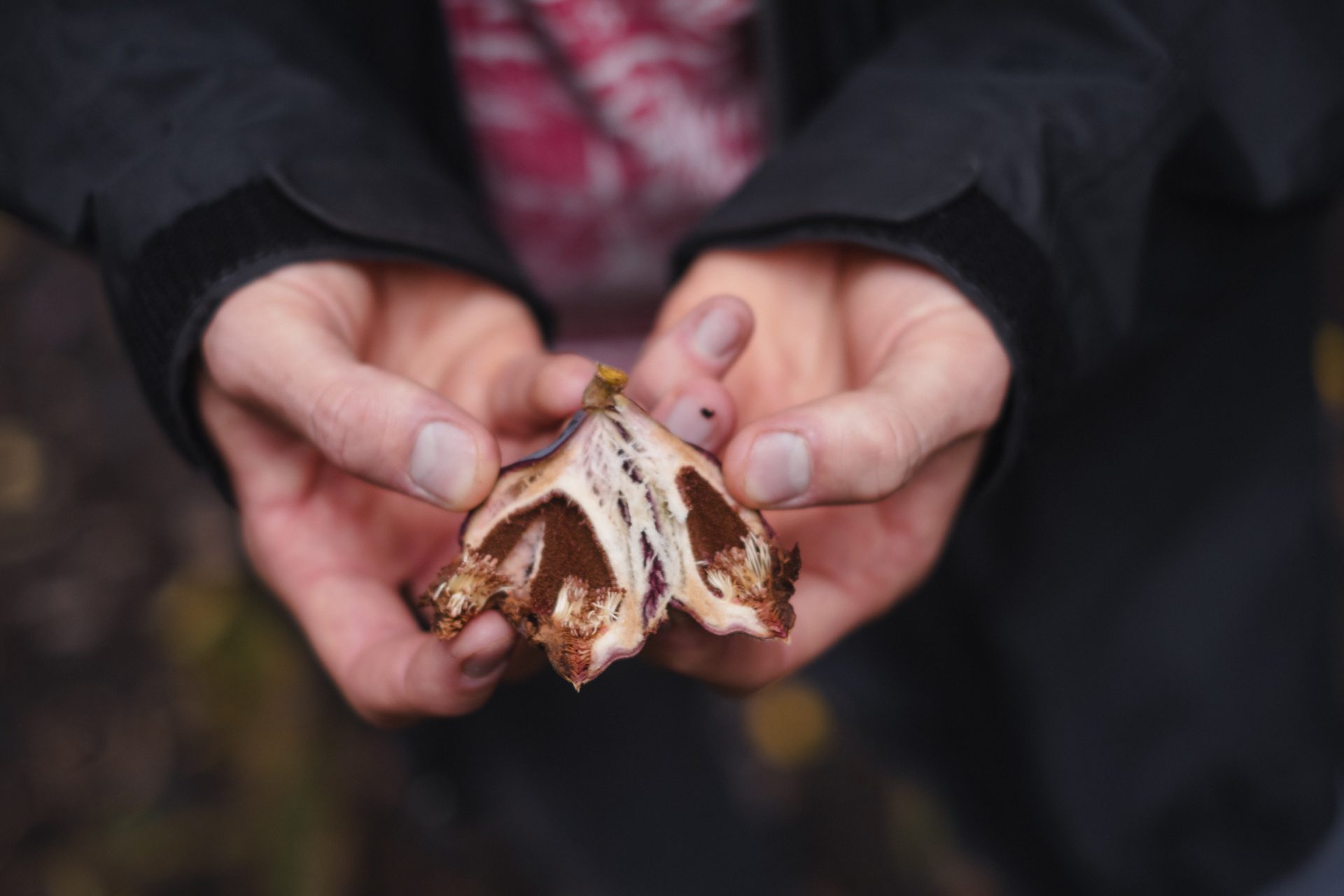
★★★★★
Amazing tour at the Kona Cloud Forest Sanctuary. Our guide Sierra was so passionate and knowledgeable about every aspect of the sanctuary, from its start 40 years ago as barren grassland to the thriving forest sanctuary it is today. It is wild to think the plants and trees are only 40 years old or less! Beautiful guided walk through different areas of the sanctuary and learning about each area. Very informative and a beautiful experience in all. Highly recommend if you are visiting the Big Island.
★★★★★
My children and I recently visited Hawaii for the first time. Ten days in total with six on the Big Island. Visiting the Kona Cloud Forest Preserve for 3 hours was my favorite activity of those six days. The place was utterly fascinating. Terri was my group’s guide and she did a tremendous job explaining the ecology and hydrology of this unique forest type and how it was reforested from former pasture land over the past 40 to 50 years. Terri had a solid working knowledge of the ethnobotany of the many plant species despite just a few months on the job. Definitely, a place worth visiting.
★★★★★
Teryn was the best tour person we could have asked for. Her beautiful energy was palpable and she added so much more to our experience! Her passion for the sanctuary is remarkable and coupled w/ her knowledge, I would say this was one of my favorite parts of our honeymoon. Highly recommend! Wish I could give it more than 5 stars! And made me feel at peace knowing the history of how this started and hopeful for our future that there are souls out there protecting our earth ♥︎
★★★★★
So Beautiful and serene. If you’re into nature you’d love this.
THE VERY NATURE OF A CLOUD FOREST IS SELF-SUSTAINING.
Kona is known for its dry weather. As a desert-like district on the leeward side of the island, it’s opposite the prevailing trade winds that hit the northeast coast. Loads of moisture is dropped as air climbs up into cooler elevations. Once that wind crosses the summit and moves down, the air warms up, expands, and clouds dissipate. It’s the orographic rain shadow effect. Kona doesnʻt get much precipitation down by the coast, but drive 20 minutes up Kaloko Drive and it’s a different story.
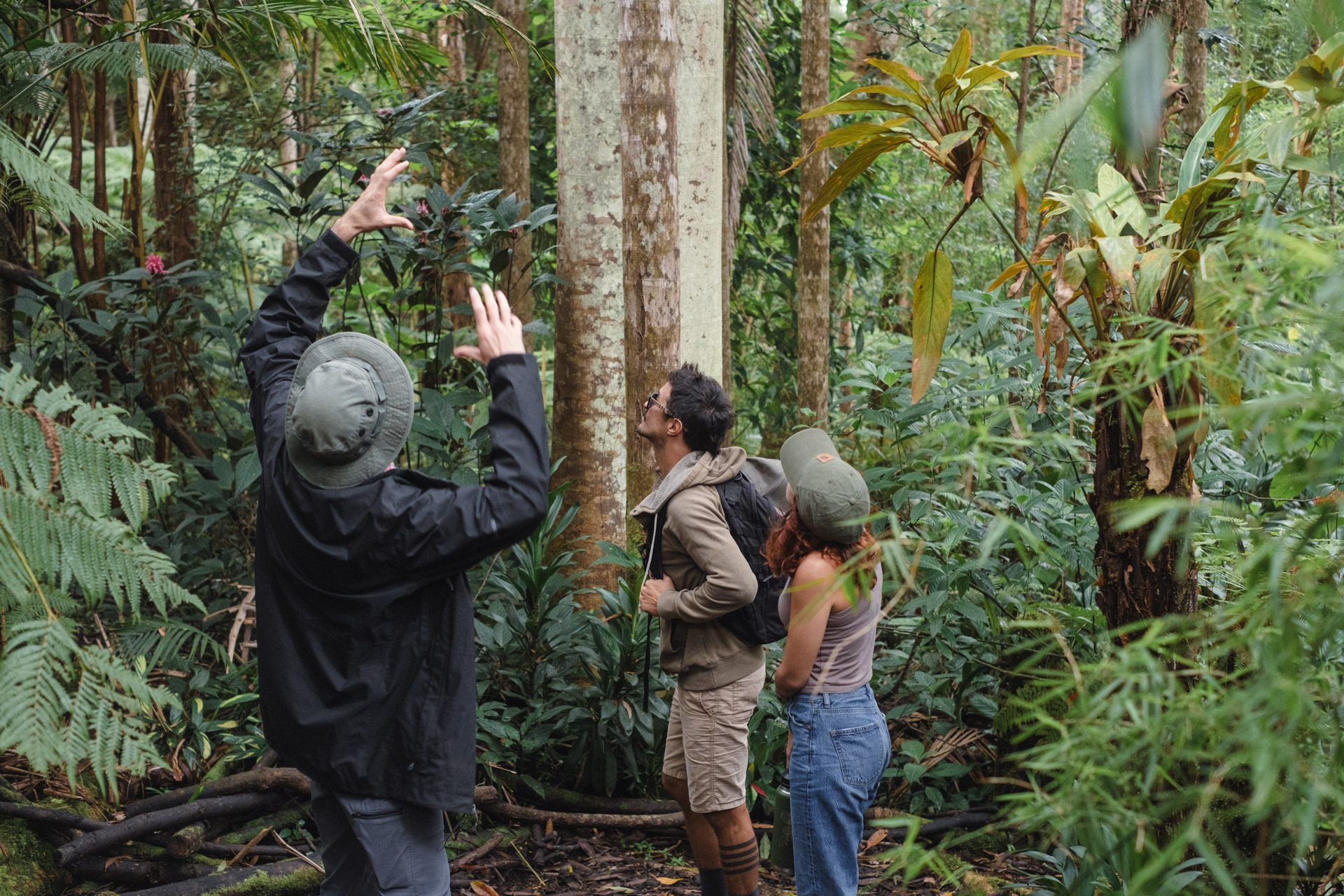
The Creation of Clouds
The Kona Cloud Forest Sanctuary isn’t a typical rainforest, but that doesn’t mean it’s dry. While the area is characterized by misty, cloudy days, it does experience rainfall, especially during the rainy season. When the clouds are heavy enough, visitors may encounter a heavy downpour. It’s a cloud forest located at that sweet spot on Hualālai, ranging from 2500 – 5000 feet in elevation; a 50-mile-long swath about five miles wide. Given the possibility of showers, we always recommend guests to bring a rain jacket for their visit.
The very nature of a cloud forest is self-sustaining. Trees cool their habitat by shading the ground and drawing water up into the canopy. Moist air rising up the mountain cools and turns to clouds. This foggy precipitation maintains the forests that created it. Cloud forests are rare. The Kona Cloud Forest Sanctuary even more so because it’s a seasonally dry cloud forest. Winters are the dry season on the Kona side of Hawaiʻi. And if you’re visiting during the summer, expect it to be even more misty.
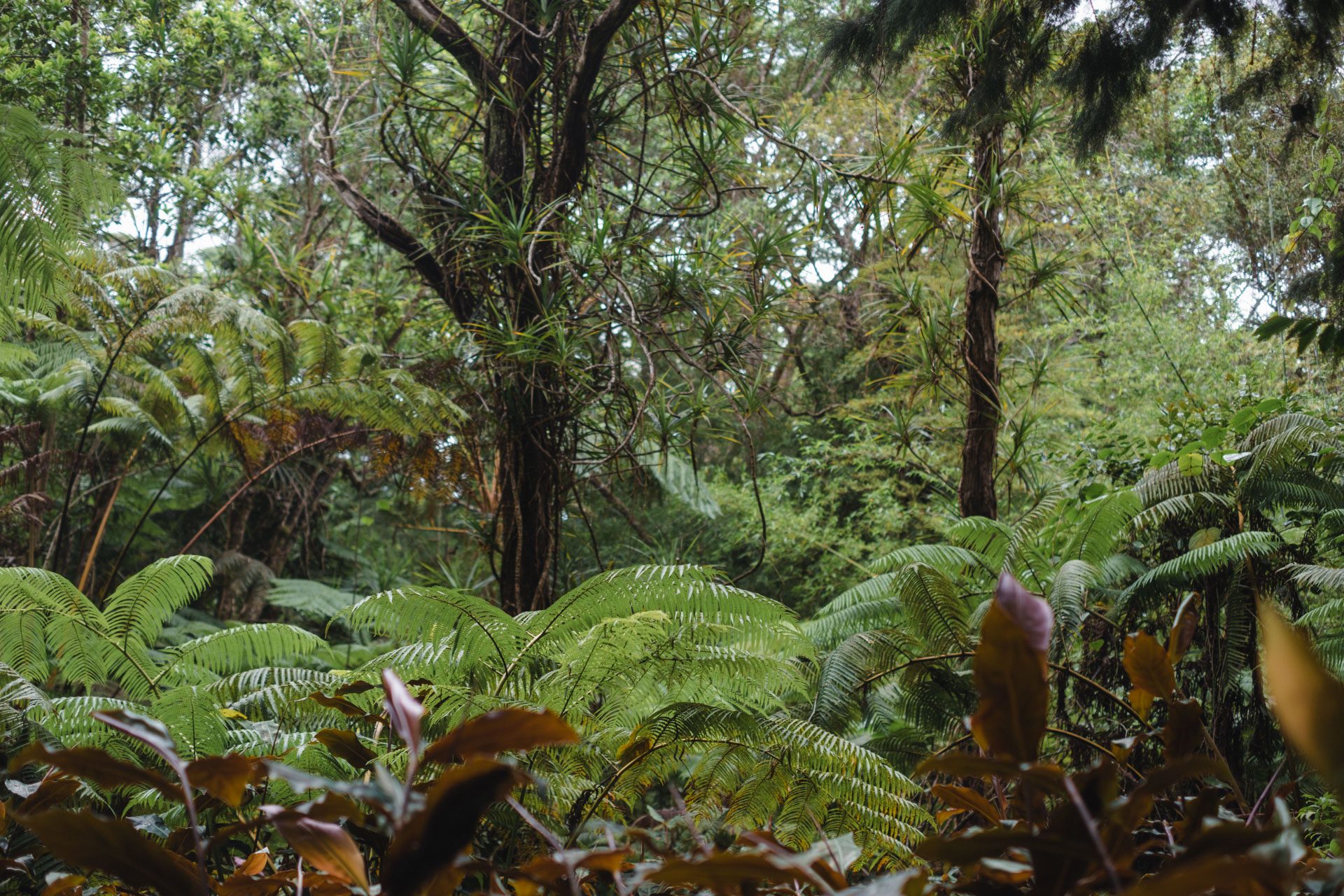
FROM LAVA TO FOREST TO KONA CLOUD FOREST SANCTUARY
The Sanctuary itself has fiery beginnings, located on the slopes of Hualālai, the volcano that frames the district of Kona. It exists on different lava flows dating back to around the years 1400, 1600, and the most recent in 1801. Generations of trees and shrubs decomposed to form the thin layer of soil supporting the current forest. The history of cattle grazing on these lands dates back to the early 1800s and continued until the mid-1900s, a practice that significantly impacted the centuries-old forests. These lands were once part of the vast Huʻehuʻe Ranch, which originally encompassed about 80,000 acres on the West side of Hawaii Island. By the 1980s, when the land was acquired by the Bezona family, it was a remnant of this deforested ranch, having experienced a gap of approximately two decades from the end of ranching activities to the beginning of the reforestation project, which started about 40 years ago.
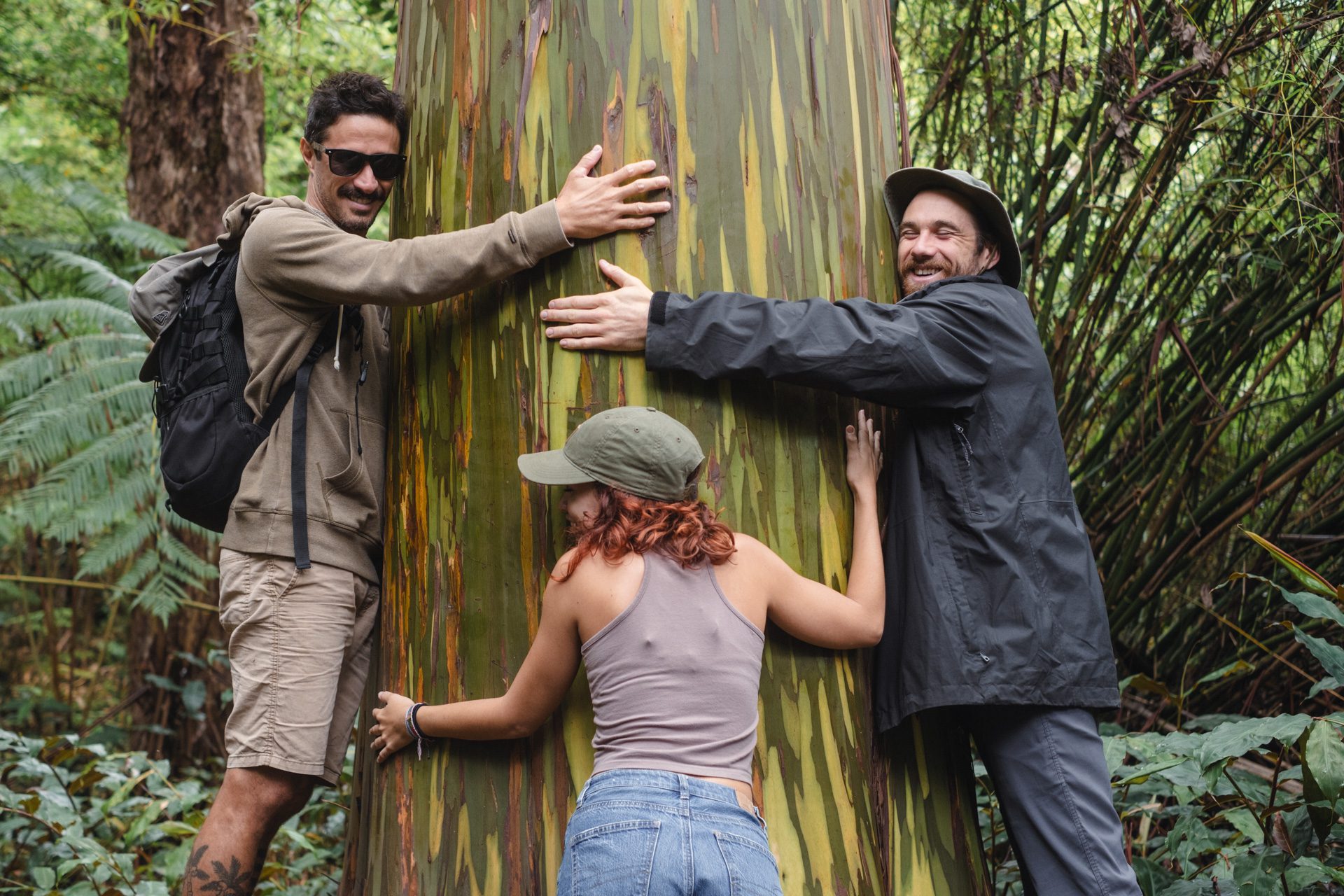
Norman Bezona, a professor emeritus at the University of Hawaii College of Tropical Agriculture and Human Resources, purchased 20 acres of land in 1982, embarking on a mission to demonstrate the potential of reforesting within a single lifetime. More than just a landowner, Bezona, a horticulture expert and naturalist, transformed this area into a ‘living classroom.’ His dedication was not about conducting scientific experiments but about using the land to educate students and the community on reforestation, the natural ecosystem, and forest stewardship. The Sanctuary, which now encompasses 70 acres on Hao Street, stands as a testament to this privately funded successful reforestation effort. Part of those original 20 acres are open for guests to experience on guided tours, offering a unique opportunity for plant enthusiasts, nature lovers, and learners to immerse themselves in the knowledge about this sacred watershed and the distinctive cloud forest ecosystem.
Continuing his legacy, Norman Bezona entrusted the stewardship of the Kona Cloud Forest Sanctuary to his daughter Diane, his grandson Drew McWhirter, and Drew’s partner Brooke Olenski. This trio forms the core of the sanctuary’s management and ownership, embodying a trifecta of dedication to Norman’s original mission. Their collective efforts focus on raising awareness about the intrinsic link between healthy forests, healthy people, and a healthier planet. By sharing cloud forest education and transformative nature experiences, Diane, Drew, and Brooke strive to foster optimal wellness in a world where people and the environment thrive harmoniously.

THIS IS A MEDITATION. THIS IS A MINDFULNESS PRACTICE. THIS IS A SANCTUARY.
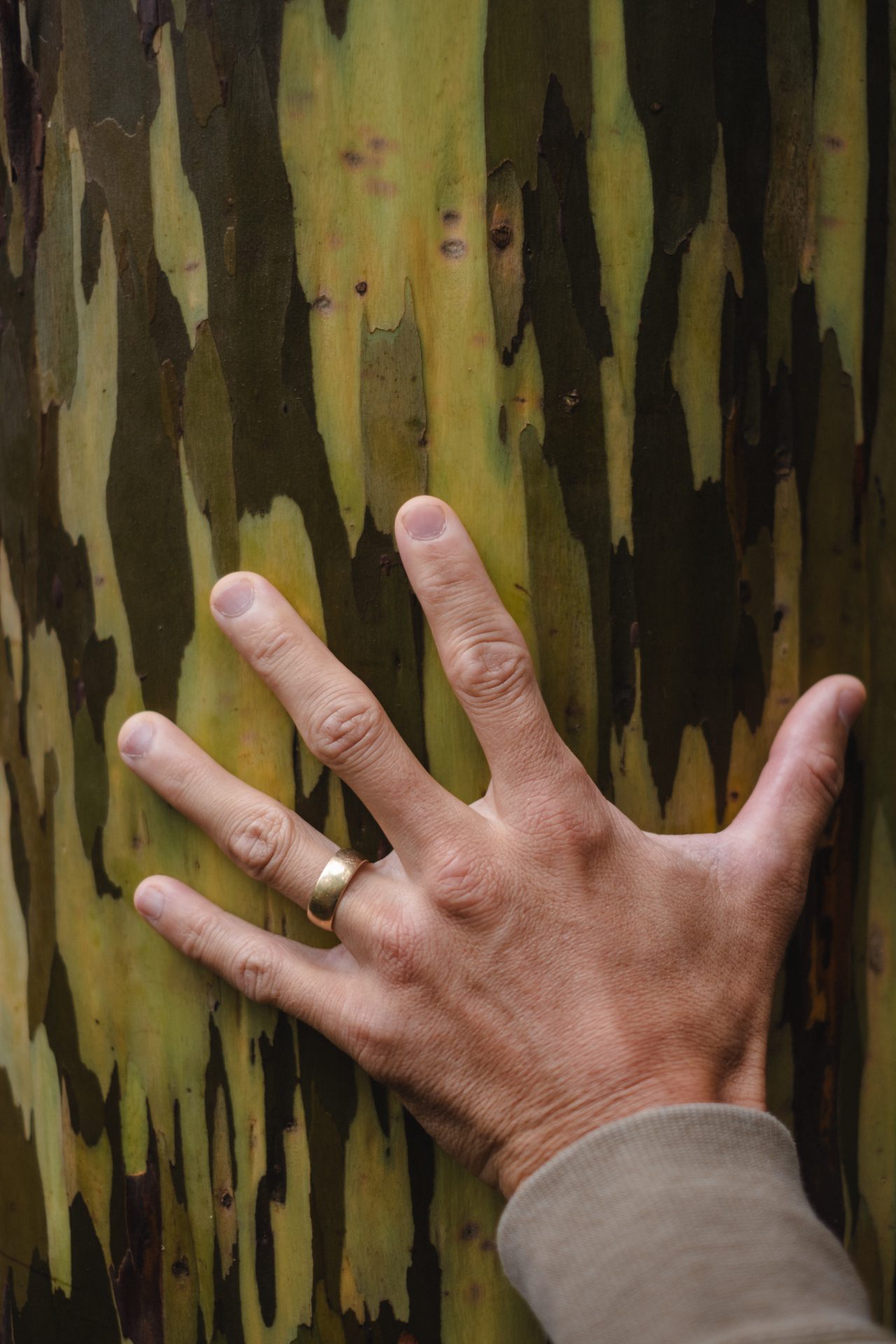
Restoring The Forests _ Restoring Ourselves
Restoration and conservation form the foundation of the Sanctuary’s mission. Humans have done damage to the land. Some of that damage is irreparable, like extinct native species that are not found anywhere else on earth, but some can be reversed, reminding us that hope exists — even in devastation.
Throughout the grounds, you’ll see some of the 200 palm and 100 bamboo species Bezona first planted on the land. There are six different types of banyans, various eucalyptus, rubber trees, and even a carnivorous garden. The forest now rests on about a foot-and-a-half of loose rubble and decomposing matter. Trails are littered with these fallen leaves and lava chunks, which nourish growth to come. Each step is an acknowledgment of the tiny sliver of time humans can experience.
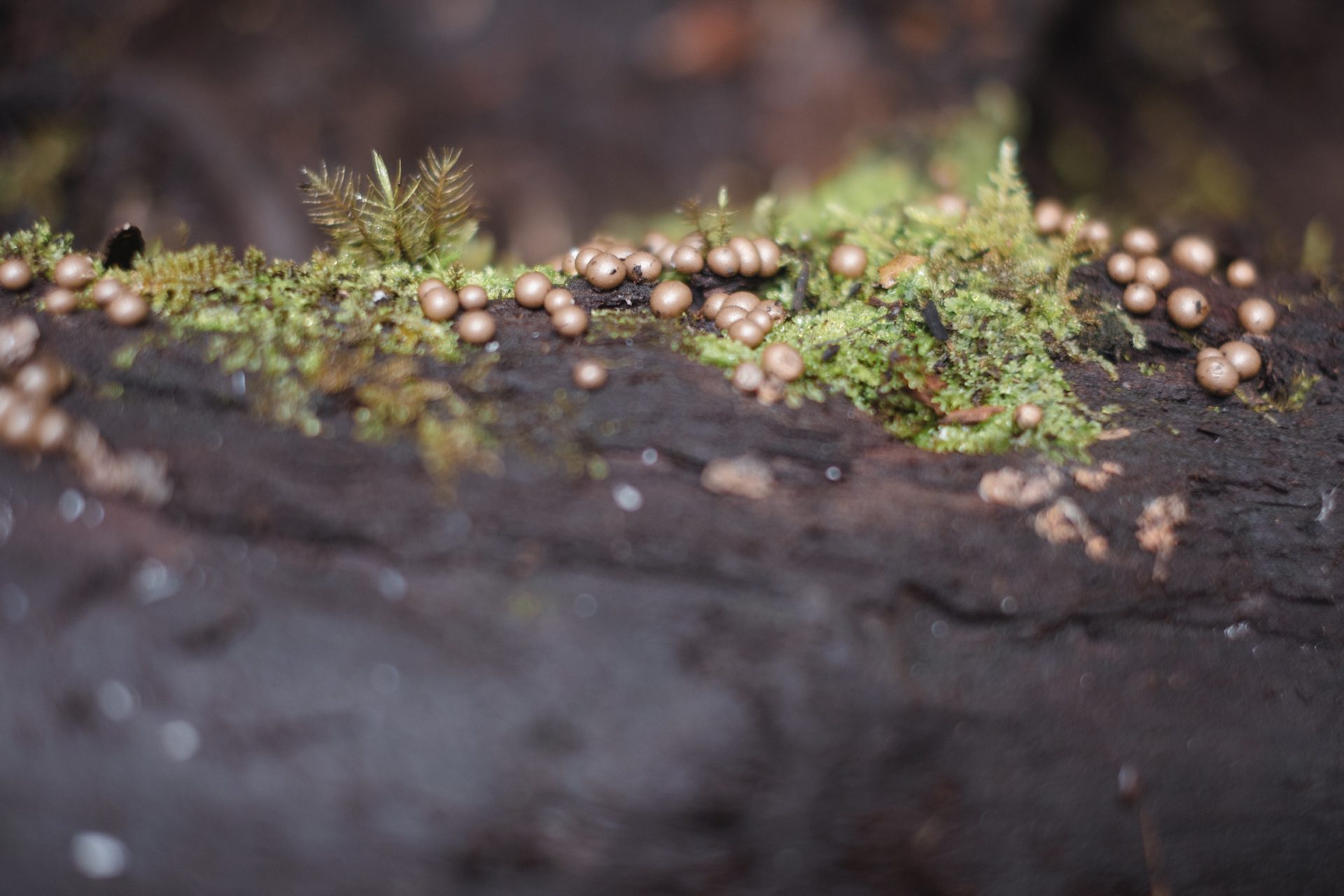
But time in the Sanctuary just doesn’t seem linear, anyway. It can stretch and morph, reaching up as high as the tallest Rainbow Eucalyptus. It can condense into the perfect spherical fruit of the Blue Marble or Rudraksha Tree. This isnʻt just a hike through some trees. This is a meditation. This is a mindfulness practice. This is a sanctuary.
EXPLORE THE SANCTUARY
Tours run daily at the Kona Cloud Forest Sanctuary. Book ahead online and choose between a two-and-a-half-hour or an hour-and-a-half option. The longer tour will take you farther up the mountain into higher elevations. You’ll walk through a bamboo tunnel, beside century-old dry-stacked lava walls, and even through areas used for filming the movie Avatar.
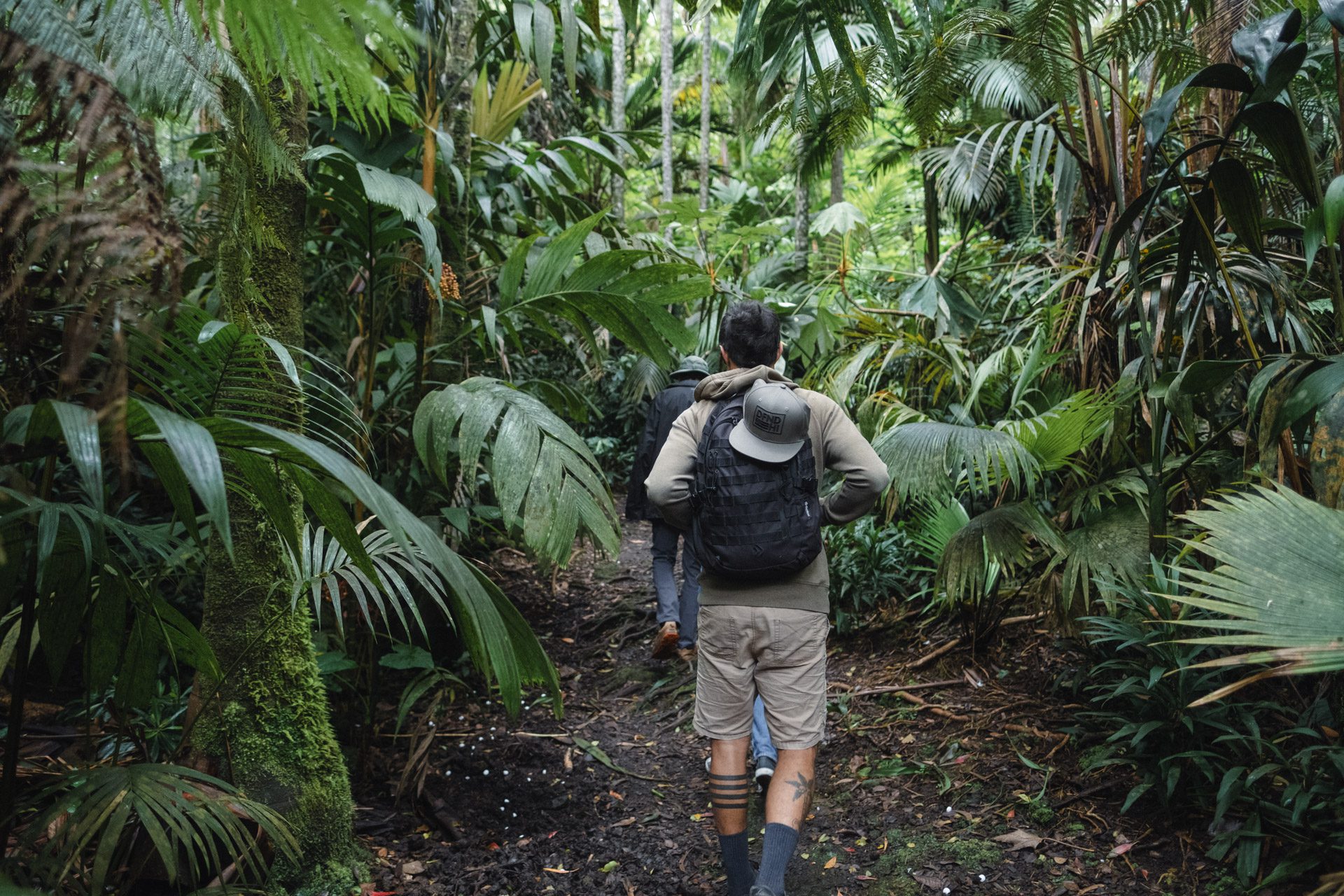
To get there, take Palani Road from the hotel. Turn up the mountain on Kaloko Drive, which winds upward until Hao Street. Parking is on the street and your guide will meet you at the gate. You’ll get decked out with a bamboo walking stick for your tour. Bring close-toed shoes, a rain jacket, and hat to avoid the damp. Show up about ten minutes early to start breathing in that fresh forest air and watch your shoulders drop in relaxation. Bring a phone or camera, too. Or, just leave it in the car to experience peace without the barrier or a screen.
If you’re looking for more, add on a Sound Bath after your hike. Sound Baths are a facilitated experience where participants relax and enjoy the vibration of sounds to bring a deep state of peace and harmony. Groups are kept small on the forest platform onsite at the Kona Cloud Forest Sanctuary.
IF YOU’RE LOOKING FOR MORE, ADD ON A SOUND BATH AFTER YOUR HIKE
FAQS
Can I explore the Sanctuary on my own or do I need a guide?
It is required to be with a guide to explore the Kona Cloud Forest Sanctuary for safety purposes as well as it creates a much better experience when you learn the story of this privately stewarded land from your tour guide!
What do I need to bring for the tour?
Please wear closed-toed shoes you will be comfortable hiking in, water, a camera to take photos, and a rain jacket. Always be prepared for rain; in a cloud forest, it can rain at any time! And of course, remember your adventure hat!
When should I arrive for the tour?
We ask that you arrive 10 minutes before the tour begins. The tour will begin on time, so it’s important that you arrive early so that you are ready to begin at the start time.
What is your cancellation policy?
Customers will only receive a full refund, credit, or rebooking with up to 48 hours’ notice of cancellation, in case of operator cancellation due to weather or other unforeseen circumstances.
No refunds will be issued due to weather unless operations are canceled by the operator, and no refunds will be issued for no-shows.
Contact us by phone to cancel, rebook, or inquire about a cancellation.
When are your tours?
We offer guided tours every day of the week! Check our tour schedule for the most up-to-date availability.
Do you have a bathroom?
Yes, we have a bathroom for use at the trailhead.
Do you have a trash can?
We ask that you arrive 10 minutes before the Sound Bath begins. The Sound Bath will begin on time, so it’s important that you arrive early so that you are ready to begin at the start time.
Do you have drinking water and food available?
We do not have a trash can. Please follow pack-in and pack-out guidelines. Any trash/wrappers that are brought in by you need to be brought out by you. When we all do our part we keep the Sanctuary, the forest, and the trails clean.
Where are you located?
We are located 15 minutes up the mountain from the Kailua-Kona Airport and 20 minutes from Kailua-Kona town.
